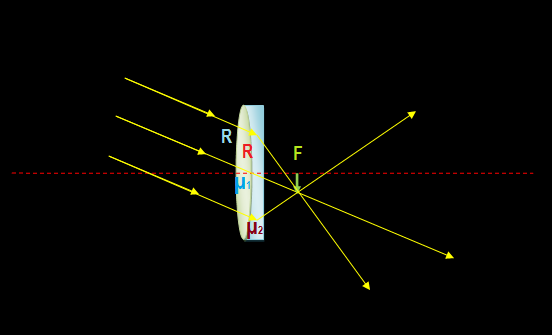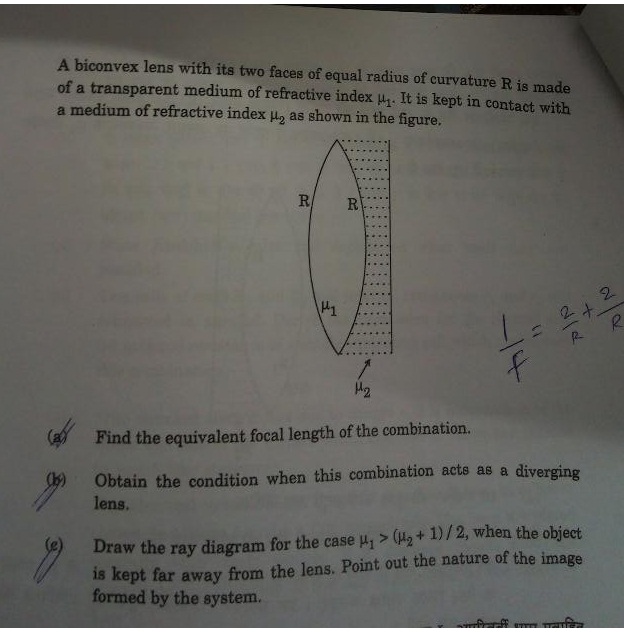Let us solve it using the following lens maker formula
#color(blue)(1/f=(mu-1)(1/R_1-1/R_2)........[1])#
Where
#f->"focal length of a lens in air"#
#mu->"refractive index of the lens w.r to air"#
#R_1->"radius of curvature of the surface of lens"#
#" facing incident rays"#
#R_2->"radius of curvature of the surface of lens"#
#" leaving emergent rays"#
Calculation of focal length of first lens #f_1#
Here #mu=mu_1;R_1=+R ;R_2=-R;f=f_1#
From equation [1]
#color(green)(1/(f_1) =(mu_1-1)(1/R-1/(-R))=(2(mu_1-1))/R#
Calculation of focal length of second plano concave lens #f_2#
Here #mu=mu_2;R_1=-R ;R_2=oo;f=f_2#
From equation [1]
#color(red)(1/(f_2) =(mu_2-1)(1/(-R)-1/(oo))=(-(mu_2-1))/R#
If #F# denotes the equivalent focal length of the combination then
#1/F=1/(f_1) +1/f_2#
#=>1/F=1/R(2mu_1 -2-mu_2 +1)#
#=>1/F=1/R(2mu_1 -mu_2 -1)#
#=>color(red)(F=R/(2mu_1 -(mu_2 +1))......[2])#
a) So this expression represents the equivalent focal length of the combination.
b) To obtain the condition when the combination acts as diverging lens in air,we can say that the focus of the combination will be virtual one and by sign convention it will be negative.
Hence #F<0#
#=>R/(2mu_1 -(mu_2 +1))<0#
#=>2mu_1 -(mu_2 +1)<0#
#=>mu_1 <(mu_2 +1)/2->"required condition"#
c)From equation [2] we get
#color(red)(F=R/(2mu_1 -(mu_2 +1))#
#=>color(red)(F=R/(2(mu_1 -(mu_2 +1)/2))#
This equation suggests that for the given condition
#mu_1 >(mu_2 +1)/2#
the #F# will be positive and the combination will act as converging lens. When the object is kept far away from the combination it will form a real image in very diminished size at its focal plane. The ray diagram can then be drawn easily from this view point and it will be like this.




